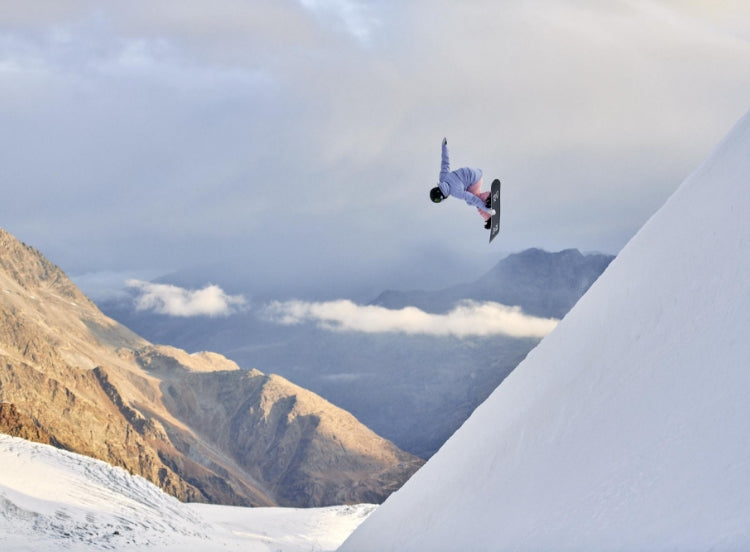With a broad range of styles, price points and functionality on offer, choosing the right pair of ski pants can seem quite complicated. But don’t worry – our expert guide to ski pants and salopettes will tell you everything you need to know.
Before you start shopping for your dream ski pants or salopettes, it’s good to understand the different styles and technical characteristics of ski pants and salopettes, and what’s best suited to the kind of skier you are.
What Is the Difference Between Ski Pants and Salopettes?
Salopettes is french for ‘overalls’ and was a term used to describe looser, bib-style ski trousers, while ski pants tended to be a more form-fitting trouser cut. But today, the terms have become mostly interchangeable.
What Are the Different Types of Ski Pants and Salopettes?
There are three basic types of ski pant construction:
- Uninsulated: a technical ‘shell’ featuring a waterproof/breathable membrane, with no added insulation. Most versatile.
- Insulated: a waterproof ‘shell’ outer featuring a waterproof/breathable membrane with an inner insulated layer. Ideal for general skiing.
- Softshell: made with a softer, water-resistant fabric that’s more breathable than ‘hard’ shells, ideal for ski touring and dryer conditions.
How To Choose Your Size and Fit?
Slim Fit
This is a popular cut for women, with most scope for a modern, fashion-forward look. While a Slim pant may not have quite as much freedom of movement as a regular or loose fit, it’s fine for general skiing purposes, with the added attraction of a streamlined and feminine silhouette. If you’re looking for an even tighter Skinny fit, look out for features like stretch panels and articulated knees.
Regular Fit
A regular fit pant provides good all-round performance, with a reasonably streamlined silhouette, extra space for layers and plenty of freedom to move.
Loose Fit
A loose fit provides maximum freedom of movement and lots of space for layers. This style is popular with skiers going for a relaxed, casual look, and girls who want to get radical in the snowpark.
Insulation and Linings
Unlike jackets which have a broad range of insulation types, ski pants tend to be based around lightweight and low bulk synthetic insulation. This is partly because our legs are less sensitive to temperatures than our torso, and also because to ski well, we need maximum freedom of movement. So while some women prefer the versatility of a shell pant that can be worn with layers or without depending on the conditions, others prefer the extra warmth that an insulated, lined pant brings.
WarmFlight® Technology
When it comes to ski pants, insulation needs to be lightweight and low-bulk, yet warm – even when wet. One of the best products on the market is Primaloft’s Thinsulate, having great warmth-to-weight thermal efficiency, good breathability and excellent resistance to humidity – this is why Roxy uses it as the basis of our Warmflight x1, x2 and x3 insulation.
Waterproofness & Breathability
5K to 20k Ratings
Because ski pants (and Jackets) are designed to both prevent water coming in and let moisture out, they are not, strictly speaking, waterproof: they are water resistant. This is achieved with a semi-porous membrane on the inside of the face fabric, and we know how effective it is by its waterproof/breathable rating. The higher the rating, the better it performs. Generally speaking, a rating of 5k/5k provides entry-level performance for general skiing, while a rating of 20k or higher is needed for very wet conditions and intense activities, like backcountry ski touring.
Gore-Tex
Gore-Tex technology offers an extreme waterproofing that lasts: durably waterproof, windproof and highly breathable protection. Gore-Tex provide premium level for skiing in extreme conditions. It also offers a perfect waterproofness and breathability for those who wants to ensure they'll stay dry the whole day down slopes.
Ski Pant Essential Features
After waterproofness, breathability and fit, comes all the little features that make life even more fun on the mountain. While all pants have different strengths and weaknesses, these are the key features to look out for when you’re shopping for ski pants.
- Snow gaiters are an elasticated panel around the ankle cuffs that prevent snow from riding up into your boots – definitely a must on powder days.
- Vents are another must for dumping excess heat – make sure they are mesh-backed to keep out loose snow. If warmth is a priority, look for single vents on the inside thigh. If you’ll be touring and want increased airflow, look for twin vents on inner and outer thighs.
- Well-designed pockets and zips are an essential: look out for waterproof zippers, handwarmer linings and avalanche beacon pocket tethers on the best equipped pants.
- Ski boots are big and clumsy: look out for zip ankle openings to make life easier.
- Scuff guards on the inside ankle protect your pants from sharp ski edges.






















